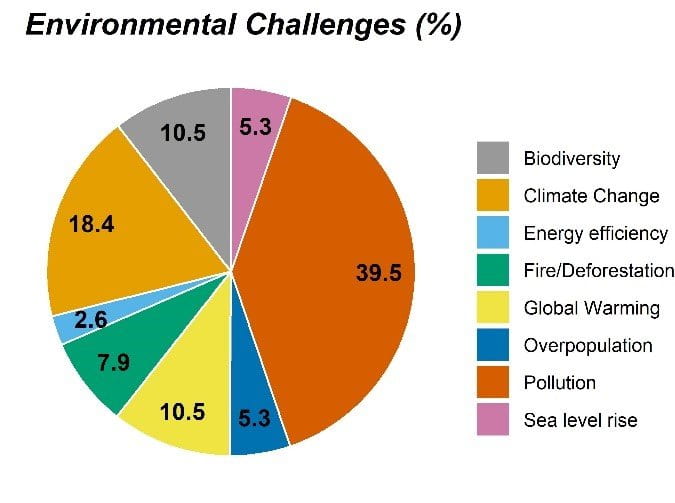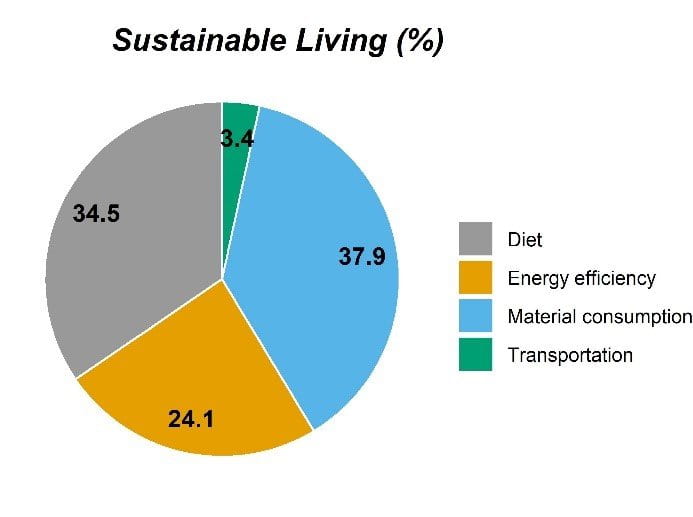By Renan Valenca
In 2020, I graded 200+ homework from sophomores’ students where they freely discussed environmental issues – everyone would get full point despite the response. Just because I’m curious and data-driven, I plotted a graph with their response to understand what the new generation has in mind. The major environmental challenges (Figure 1A) in their view are the pollution of water and air (39.5%), followed by climate change (18.4%) and global warming (10.5%). Within the pollution of water, most of the students are particularly concerned about plastic pollution in the ocean and the loss of drinking water accessibility due to contamination. To overcome such challenges, a more sustainable life could be crucial for future generations. Actions such as lowering material consumption (37.9%) – especially plastic— changing their diet (34.5%) by reducing meat consumption, and increasing their house’s energy efficiency (24.1%) by turning off lights and switching to renewable energy, were the most common responses between the students (Figure 1B). In the future, brands should pay special attention to how they market themselves because being an active environmentally friendly company will be the deciding factor for these clients to consume their products. For future sustainable lifestyles, the two top priorities among students are using renewable energy through the implementation of solar panels and buying electric cars. Based on these results, we may conclude that the future of our environmental issues will be focused on clean air and water, while the sustainable lifestyle will be shaped around renewable energy with little to no space for oil-derived energy.
Figure 1 – The pie graph represents the percentage of students that chose (A) the main future environmental challenges and (B) the sustainable living that they feel the most important to follow.
Renan was part of the 2021 INFEWS cohort and received his PhD in Civil & Environmental Engineering at UCLA Spring 2022. His research is on boosting the resiliency of stormwater biofilters to mitigate the impacts of climate change stressors on the quality of water.
The blog is part of the INFEWS Social Media Series and the Field Lab course.


